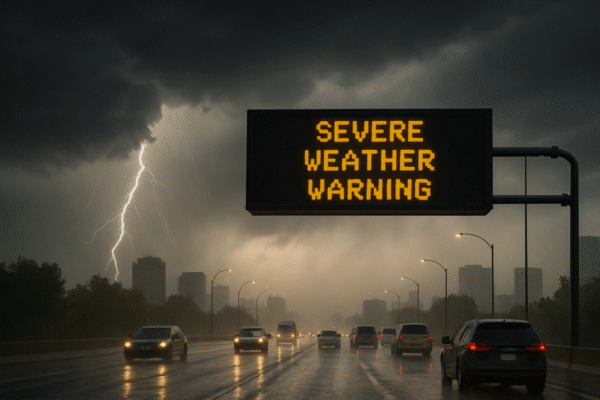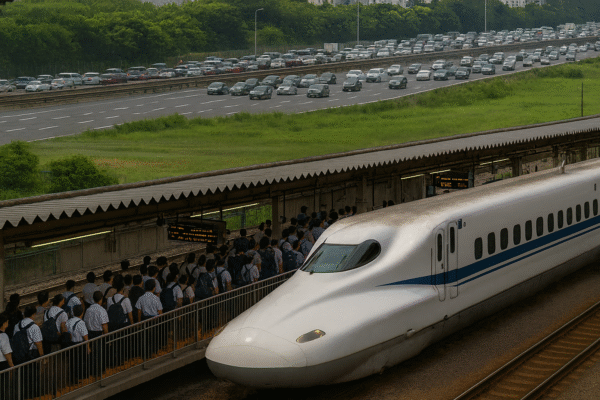As Japan enters the heart of its Obon season—from approximately August 9 to 17, 2025—travel demand has surged dramatically. Traditionally a peak homecoming period, Obon this year is compounded by Mountain Day on August 11 and the possibility of nine consecutive days off, intensifying travel pressures across the country.
Expressways Under Strain
Highways are especially affected. NEXCO East’s forecast predicts 10 km or more of congestion across multiple corridors, while Chūō Expressway could see backups stretching as long as 45 km . In the Kanto–Koshin region, drivers should brace for 10–15 km delays on the Joshin’etsu Expressway on August 9 and 11, and similar-length jams on the Kan-etsu Expressway between August 11–15 . Weekend travel out of Tokyo and the return peaks on August 16–17 mirror this pattern .
Traffic authorities recommend staggered departures, frequent rest breaks, maintaining safe following distances, and refraining from lane-changing maneuvers— especially in slow-moving traffic . Real‑time updates via JARTIC and expressway companies’ official channels can help drivers adapt en route
Trains and Flights Operating at Max Capacity
Within the rail network, Shinkansen bullet trains, especially on routes such as the Tōkaidō line, are experiencing near-full occupancy, with high demand for both reserved and unreserved seating. Although operators are adding extra cars and dispatching additional trips, stations and platforms remain densely crowded.
Domestic flights reflect similar trends. Routes to summer destinations like Okinawa, Hokkaido, and remote islands are filling fast. Travelers are strongly advised to book flights well ahead to avoid sold-out trips and inflated fares.
Cultural Roots of the Surge
The Obon festival is a revered tradition honoring ancestral spirits. Families nationwide return to hometowns to reconnect, visit graves, and take part in local rituals. This deeply rooted tradition, coupled with the summer holiday period, turns mid-August into one of Japan’s most intense travel seasons—second only to New Year and Golden Week.
Impact on Visitors & Smart Travel Advice
Travelers this Obon face inevitable delays, crowded public transport, and long queues—even at service areas and attractions. Yet Japan’s transport infrastructure, bolstered by meticulous planning and backups, remains remarkably resilient.
To navigate this period smoothly, consider these strategies:
- Book early—for trains, flights, and accommodations, especially in popular regions.
- Travel off-peak—depart mid‑Obon or during late hours to avoid peak congestion.
- Use real‑time apps like NAVITIME, Ekispert, and JARTIC for traffic and transit insights.
- Explore quieter areas—places like northern Japan, lesser-known mountain towns, or the Japanese Alps offer cultural immersion with fewer crowds .
- Build flexibility into itineraries—expect possible disruptions and have alternatives ready.
Hidden Gems and Cultural Rewards
Despite the logistical challenges, Obon is also one of the richest cultural periods to visit Japan. Lively Bon Odori dance festivals enliven streets across the country, from local communities to grand events like Awa Odori in Tokushima. Temples and riverbanks glow with floating lanterns, creating an atmospheric backdrop for reflection and celebration .
Final Takeaway
Japan’s Obon 2025 ushers in one of the most frenzied travel weeks of the year—expressways wobbling under heavy traffic, Shinkansen and flights booking out early, and hotspots bursting with visitors. Yet, with careful planning—early reservations, flexible schedules, smart route choices—you can smooth out the bumps of travel.
By tapping into real-time tools, avoiding rush days, and discovering lesser-known destinations, visitors can enjoy not only safe and efficient travel but also the profound cultural rhythm of Obon that reveals Japan at its most communal, traditional, and heartfelt.
For more travel news like this, keep reading Global Travel Wire

















